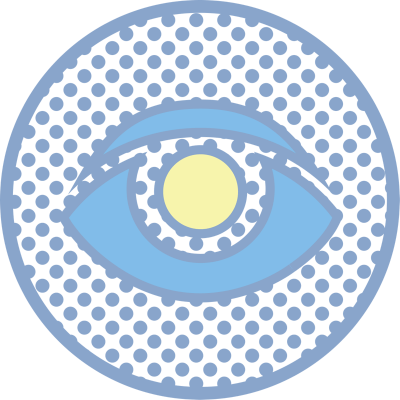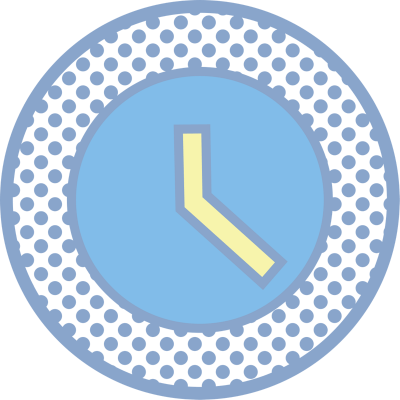Hyperopia (Farsightedness): Causes, Symptoms, and Treatment Options
Imagine trying to read your favorite book, but the letters on the page seem blurry and far away. Or, perhaps you’re struggling with frequent headaches after spending hours on your phone or computer. These aren’t just random inconveniences—they could be signs of hyperopia, commonly known as farsightedness.
We’ll delve into what hyperopia is, what causes it, and how you can treat and manage it effectively. Whether you’re a concerned parent or someone experiencing symptoms, understanding the nuances of this condition could lead to a brighter, clearer future.
What Is Hyperopia (Farsightedness)?
Hyperopia is a common refractive error where distant objects are seen more clearly than objects close by. If you’re reading a menu at a restaurant and the words appear fuzzy or hard to decipher, you may be experiencing the effects of farsightedness. This condition occurs when the eyeball is too short or when the cornea (the outer covering of the eye) is not curved enough to focus light properly on the retina.
In a normal eye, light focuses directly on the retina—the part of the eye responsible for converting light into signals for the brain to interpret as images. However, in someone with hyperopia, light focuses behind the retina, making nearby objects appear blurry.
Hyperopia is not only inconvenient but can also cause significant discomfort over time if left untreated. For children, it can affect academic performance, while adults may find it disrupts daily activities like reading or working on a computer.

Causes of Hyperopia: What’s Behind Farsightedness?
Understanding the causes of hyperopia is the first step toward addressing it. The following are some common factors that lead to the condition:
-
மரபியல்:
If one or both of your parents are farsighted, there’s a high chance you could be too. Genetic predisposition plays a significant role in how your eyes develop.
-
Eye Structure:
In many cases, hyperopia results from an eyeball that is shorter than normal. This structural abnormality prevents light from properly focusing on the retina.
-
Corneal Issues:
A flatter or less curved cornea can affect how light enters the eye, leading to hyperopia.
-
வயது:
Although hyperopia can affect people of all ages, age-related changes in the lens’s flexibility can exacerbate the condition, especially after the age of 40.
-
Underlying Health Conditions:
Certain conditions, such as diabetes or conditions affecting the eye’s anatomy, may contribute to hyperopia.
Is Hyperopia Impacting Your Life?
Signs and Symptoms
Not all cases of hyperopia are obvious. Sometimes, it can develop gradually, making it harder to spot early on. Here are the key symptoms to watch for:
-
மங்கலான பார்வை: Difficulty focusing on nearby objects like books, mobile devices, or computer screens.
-
கண் சிரமம்: Frequent squinting, rubbing of the eyes, or experiencing fatigue after tasks requiring near vision.
-
தலைவலி: Persistent headaches after reading or screen use.
-
Difficulty Reading: Small print appears blurry or requires holding materials farther away to see clearly.
-
Lazy Eye (in children): If untreated, hyperopia in children can lead to amblyopia or strabismus, where the eyes do not align properly.
How Is Hyperopia Diagnosed?
Diagnosing hyperopia is relatively straightforward and involves several simple eye tests:
-
பார்வைக் கூர்மை சோதனை:
This test measures the sharpness of your vision using a chart of letters at different distances.
-
Refraction Test:
A device called a phoropter is used to determine the exact prescription needed to correct your vision.
-
Comprehensive Eye Exam:
An ophthalmologist or optometrist examines the overall health of your eyes to rule out underlying conditions.
Regular eye exams are crucial, particularly for children. Early diagnosis can prevent long-term complications and improve their academic performance and quality of life.
Treatment Options: Correcting Your Vision
The good news is that hyperopia can be easily managed through various treatments designed to correct the refractive error and provide clear vision.
1. Eyeglasses
Eyeglasses are the simplest and most common solution for hyperopia. With the right prescription, they can correct the way light enters your eyes, allowing you to see close objects clearly. Plus, glasses come with the added benefit of being stylish and easy to maintain.
2. Contact Lenses
For those who prefer an alternative to glasses, contact lenses are a popular option. They sit directly on the eye’s surface and provide a wider field of vision compared to glasses. However, they do require proper cleaning and maintenance.
3. Refractive Surgery (LASIK, SMILE, and More)
For a more permanent solution, surgical options such as LASIK or SMILE (Small Incision Lenticule Extraction) are highly effective. These procedures reshape the cornea to correct how light is focused on the retina, offering long-term relief from hyperopia. Dr Agarwals Eye Hospital is at the forefront of advanced refractive surgeries, providing safe and effective options tailored to your needs.
4. Orthokeratology (Ortho-K)
This non-surgical option involves wearing specially designed contact lenses overnight to reshape the cornea temporarily. It’s an excellent option for those seeking freedom from daytime glasses or lenses.
Hyperopia in Children: Why Early Detection Is Crucial
Children are often unaware of their vision problems, making it essential for parents to ensure regular eye check-ups. Untreated hyperopia in children can lead to developmental delays, difficulty in school, and other complications like lazy eye.
Signs that your child may have hyperopia include difficulty concentrating in class, holding books too far from their face, or complaints about headaches and fatigue. Early diagnosis ensures effective treatment and prevents long-term issues.
Managing Hyperopia: Tips for Eye Health
While treatment options are essential, there are also lifestyle changes and habits you can adopt to maintain overall eye health and manage symptoms effectively:
-
20-20-20 விதியைப் பின்பற்றவும்: Every 20 minutes, look at something 20 feet away for 20 seconds to reduce eye strain.
-
திரை நேரம் வரம்பு: Excessive screen time can strain your eyes and worsen hyperopia symptoms.
-
Eat a Balanced Diet: Foods rich in vitamins A, C, and E, along with omega-3 fatty acids, are beneficial for eye health.
-
வழக்கமான கண் பரிசோதனைகள்: Periodic check-ups ensure that any changes in vision are addressed promptly.
Success Stories: Restoring Clarity, One Patient at a Time
Many patients have experienced life-changing improvements after seeking treatment for hyperopia. Take, for instance, a 35-year-old software engineer who underwent LASIK surgery and no longer struggles with blurry near vision during long coding sessions. Testimonials like this showcase the potential for treatment to improve both vision and overall quality of life.
Final Thoughts: Don’t Let Blurry Vision Hold You Back
Hyperopia is more than just an inconvenience—it can significantly affect your daily activities and quality of life if left untreated. The good news is that advancements in modern eye care provide a range of effective treatments to help you regain clear vision. At Dr Agarwals Eye Hospital, we’re committed to providing world-class care to help you see the world clearly, one step at a time.
Ready to take the first step toward better vision? Schedule your consultation with our experts today.

கண் பிரச்சனையை அலட்சியப்படுத்தாதீர்கள்!
இப்போது ஆன்லைன் வீடியோ ஆலோசனை அல்லது மருத்துவமனை சந்திப்பை முன்பதிவு செய்வதன் மூலம் எங்கள் மூத்த மருத்துவர்களை அணுகலாம்
இப்போதே சந்திப்பை முன்பதிவு செய்யுங்கள்